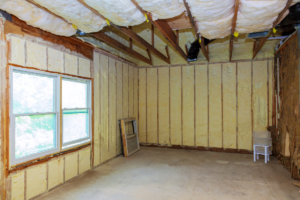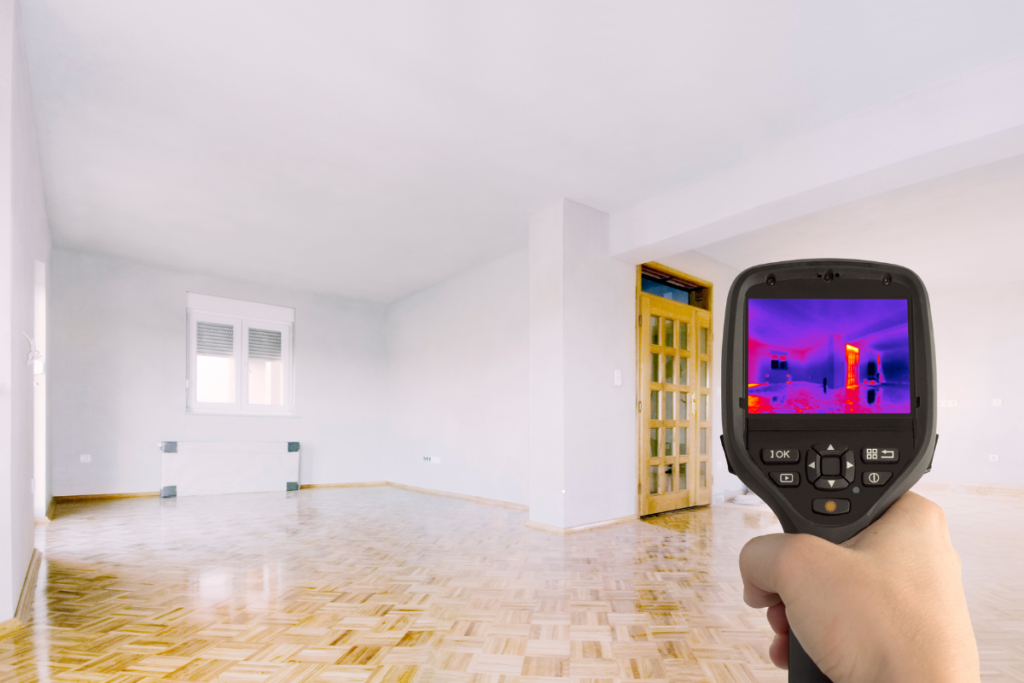 Introduction To Thermal Insulation Estimating Service
Introduction To Thermal Insulation Estimating Service
In today’s construction industry, energy efficiency is not just a desirable feature but a fundamental requirement. A key component of energy-efficient buildings is thermal insulation. It plays a vital role in regulating indoor temperatures, reducing heating and cooling costs, and increasing overall comfort. For builders, contractors, and property owners, accurately estimating the cost of thermal insulation is essential to ensure that both budgets and energy-saving goals are met. This process, known as thermal insulation estimating service
, is crucial to understanding how much insulation is required and the total cost involved.
This article provides an in-depth look at thermal insulation, its importance, the factors affecting cost estimates, and how to carry out accurate thermal insulation estimating service to optimize building performance and energy efficiency.
Understanding Thermal Insulation
Thermal insulation refers to the materials and methods used to prevent heat transfer between the inside and outside of a building. Proper insulation helps maintain a comfortable indoor environment by keeping heat inside during the winter and blocking it during the summer. Effective insulation systems reduce the need for heating and cooling, which, in turn, lowers energy bills.
The primary types of thermal insulation materials used in construction include:
- Fiberglass Insulation: One of the most common types of insulation, fiberglass is known for its affordability and effectiveness in reducing heat transfer.
- Foam Insulation: This type includes rigid foam panels and spray foam. It provides excellent insulation properties and is commonly used in walls, roofs, and floors.
- Mineral Wool Insulation: Made from natural materials like basalt or recycled slag, mineral wool is fire-resistant and offers soundproofing qualities.
- Cellulose Insulation: Made from recycled paper products, cellulose is an eco-friendly option that provides good thermal resistance.
- Reflective Insulation: This type of insulation uses reflective surfaces, like aluminum foil, to reflect radiant heat away from the building.
The Importance of Thermal Insulation
Investing in proper thermal insulation has several benefits:
- Energy Savings: Insulation reduces the need for heating and cooling, which can lead to significant savings on energy bills. Well-insulated buildings consume less energy and are more eco-friendly.
- Comfort: Proper insulation helps maintain consistent indoor temperatures, providing a more comfortable living or working environment.
- Soundproofing: Many insulation materials also have soundproofing properties, which can reduce noise from outside and within the building.
- Environmental Impact: Energy-efficient buildings contribute to reducing carbon emissions, making insulation an environmentally responsible choice.
- Property Value: Buildings with effective insulation systems are more attractive to buyers, as they promise lower energy costs and better comfort.
Given these benefits, ensuring accurate thermal insulation estimating service is essential for any construction project.
Key Factors Affecting Thermal Insulation Estimating Service
Estimating the cost of thermal insulation requires considering several factors, each of which can influence the overall budget. Understanding these variables helps in creating a realistic and detailed cost estimate.
1. Building Size and Structure
The size and layout of the building are the most obvious factors affecting thermal insulation costs. Larger buildings will require more insulation materials, which increases both the material and labor costs. Additionally, the complexity of the building’s structure—such as multi-story designs, sloped roofs, or basements—can impact how much insulation is needed and the difficulty of installation.
For example, insulating a simple one-story home will generally cost less than insulating a large, multi-level commercial building. Estimators must account for all surfaces where insulation will be installed, including walls, ceilings, floors, and roofs.
2. Type of Insulation Material
The choice of insulation material is another critical factor. Different materials offer varying levels of thermal resistance, durability, and ease of installation, all of which affect cost. For example:
- Fiberglass: Typically one of the least expensive insulation options, but may require additional vapor barriers in areas prone to moisture.
- Spray Foam: More expensive but provides excellent air-sealing properties and a higher R-value (thermal resistance).
- Mineral Wool: Offers both fire resistance and soundproofing but may come with higher material costs.
- Reflective Insulation: Suitable for attics or areas with high sun exposure, it may require less material but specialized installation techniques.
The thermal insulation estimating service process must include the cost of the chosen material, taking into account both upfront material expenses and long-term benefits such as energy savings.
3. Climate and Location
The local climate plays a significant role in determining how much and what type of insulation is necessary. Buildings in colder climates will require thicker or more efficient insulation to retain heat, while buildings in hotter climates may focus more on reflecting heat and preventing it from entering the structure.
Climate zones also influence local building codes, which can dictate the minimum R-value for insulation. Estimators must ensure that insulation meets these requirements, which can increase costs in regions with extreme temperatures.
4. Labor Costs
The cost of labor for installing insulation varies based on the region, project size, and complexity of the installation. In some cases, installing insulation can be straightforward, such as rolling out fiberglass batts in an attic. However, other installations, like spray foam in walls or floors, require specialized equipment and skilled workers, leading to higher labor costs.
5. Building Codes and Energy Standards
Local building codes and energy-efficiency standards will influence the amount and type of insulation required. For example, buildings in regions with strict energy codes may need insulation with higher R-values, which can increase material costs.
Additionally, energy standards such as LEED (Leadership in Energy and Environmental Design) certifications may require more extensive insulation to meet environmental goals. Estimators should familiarize themselves with these standards to ensure compliance and avoid potential fines or delays.
6. Additional Factors
Other factors that may influence thermal insulation estimating service include:
- Existing Insulation: For retrofit projects, the presence of existing insulation may reduce the amount of new insulation required.
- Moisture Control: In some areas, moisture-resistant insulation or vapor barriers may be necessary, adding to the cost.
- Installation Challenges: Hard-to-reach areas, such as attics, crawl spaces, or irregularly shaped walls, may require more time and labor, increasing installation costs.
Steps in the Thermal Insulation Estimating Process
Performing a detailed thermal insulation estimating process ensures that all factors are considered and that the estimate is accurate. The following steps outline a typical process for estimating the cost of thermal insulation for a project.
1. Site Assessment and Measurement
The first step in thermal insulation estimating service is assessing the building site and measuring all areas that require insulation. This includes walls, ceilings, floors, roofs, and any other surfaces where heat transfer may occur. Accurate measurements are crucial for determining the amount of insulation material needed.
2. Material Selection
Next, the appropriate insulation material is selected based on the building’s needs, climate, and budget. Estimators should consider both upfront costs and long-term benefits when choosing insulation materials.
3. Labor Cost Estimation
After selecting the insulation material, labor costs must be calculated. This includes estimating the time required for installation and factoring in the expertise needed for more complex insulation systems.
4. Building Code Compliance
Ensure that the insulation plan complies with local building codes and energy-efficiency standards. This may involve adjusting the amount or type of insulation used to meet minimum R-value requirements.
5. Final Cost Calculation
Finally, all costs are combined to create the final estimate. This should include material costs, labor, equipment, and any additional expenses such as vapor barriers or moisture protection. A contingency allowance of 10-15% is recommended to account for unforeseen challenges.
Accurate thermal insulation estimating is crucial for achieving energy efficiency and ensuring a comfortable indoor environment. By understanding the factors that influence insulation costs—such as building size, insulation material, climate, and labor—contractors and builders can create more reliable estimates that help control budgets and optimize performance. Thermal insulation is an investment that pays off in the form of reduced energy bills, improved comfort, and increased property value. Therefore, getting the cost estimation right is the first step toward reaping these benefits in the long term.
Are you looking for the best estimating services in USA?
Look no further than “https://zionestimating.com”
They are offering top-notch services like;
- Construction/cost estimation
- Budget planning
- Material takeoff
- Equipment estimation
and further more!!!
Here are some more information for your convenience:
Phone no. : +1 718-427-9941 || +1 562-383-6177
Email: [email protected]
Visit their blogs and site
https://zionestimating.com for the latest updates and service tips!
